Molluscs
Molluscs come in many diverse forms including:
- bivalves, such as cockles and mussels, which have two shells hinged together.
- sea snails or marine gastropods, have a single spiraled shell. The spiral can be obvious as in turban shells or flattened as in abalone shells. Occasionally a sea hare – a swimming sea snail – is found stranded. These have a brown papery shell.
- cephalopod molluscs can be found in the form of cuttle-bones, the ram’s horn (Spirula spirula) and occasionally the pen of a squid. Surprisingly, some types of “worm tube” are made by an unusual form of mollusc.
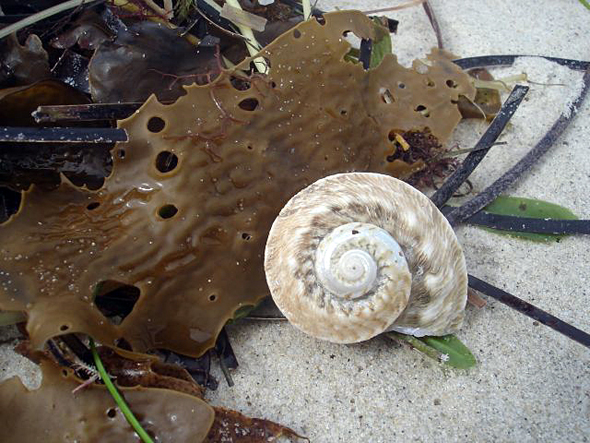
Common name
Turban shell
Scientific name
Turbo torquatus (Mollusca: Gastropoda: Turbinidae)
Description
Turbans are large, heavy, thick-shelled sea-snails (marine gastropods) with rounded whorls. This species lives in rock pools on exposed shores and its operculum (door) has a spiral pattern.
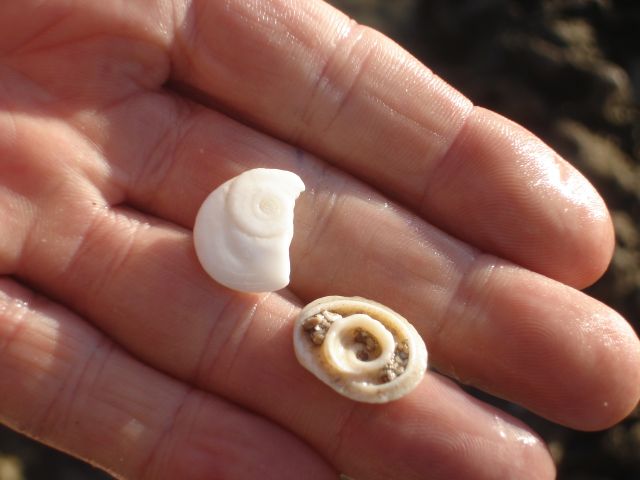
Common name
Operculum of turban shell
Scientific name
N/A
Description
Most sea snails have an operculum attached to their body that “closes the door” when they retract into their shell. The turban shells have a thick, heavy, disc-shaped operculum made of limy material as distinct from the lighter, horny material of some other sea snails. The operculum of this species, Turbo torquatus, shows a spiral pattern while that of another species, Turbo intercostalis, is knobbly.
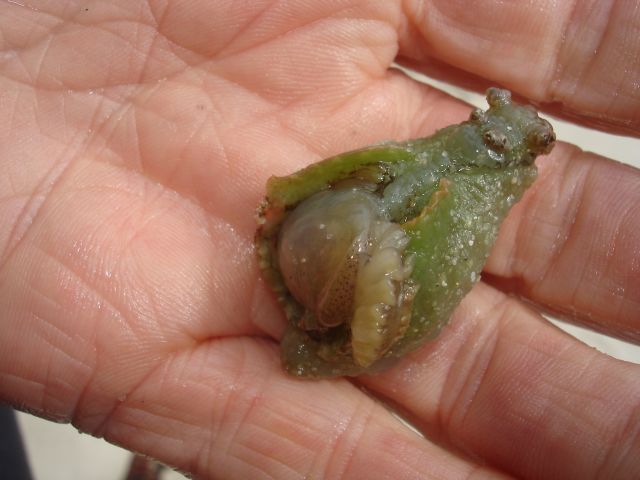
Common name
Sea hare or sea slug
Scientific name
(Mollusca: Gastropoda: Opisthobranchia)
Description
These are herbivorous molluscs with a papery internal shell. They swim using wave-like movements of the flaps along their side. Being hermaphrodites they can fertilise each other. Amazingly they often mate in groups forming long chains. Each acts as a male to the animal in front and a female to the one behind. Each lays millions of eggs in spaghetti-like strands. This is a small one but one local species, Aplysia gigantea, grows to a length of 60 cm.
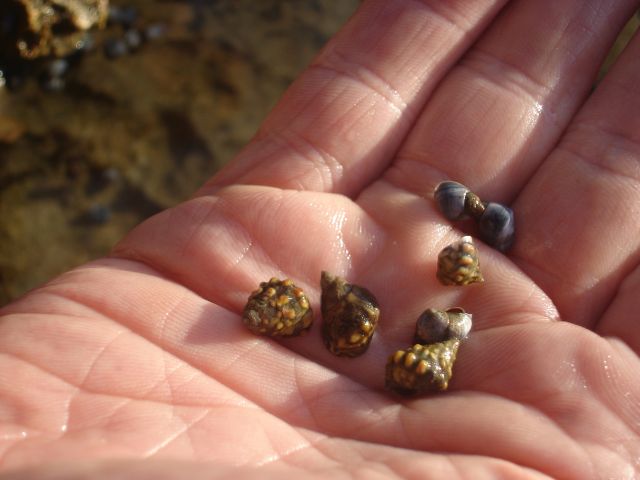
Common name
Littorinids
Scientific name
(Mollusca: Gastropoda: Littorinidae)
Description
Sometimes called winks or periwinkles, these little sea snails graze on microscopic algae and lichens in the intertidal zone or splash zone. Two species are shown here at Mudurup Rocks. They have a tight-fitting operculum (door) so that they can survive long periods of exposure to air without drying out.
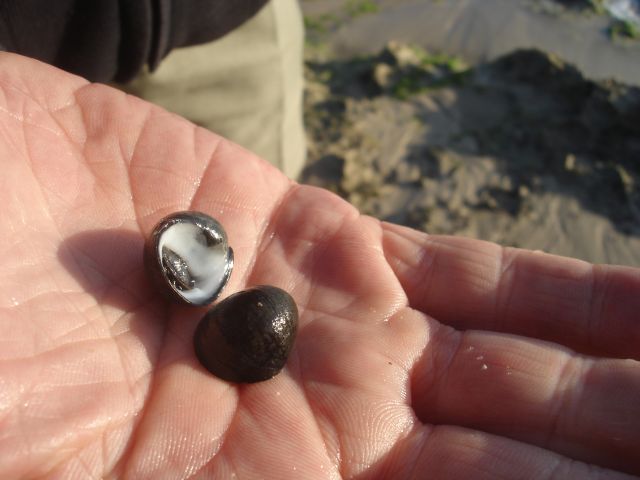
Common name
Black neritas
Scientific name
Nerita atramentosa (Mollusca: Gastropoda: Prosobranchia: Neritidae)
Description
These very rounded sea snails graze on algae that covers rocks in the high intertidal zone. They are usually found in clusters on shaded overhangs.
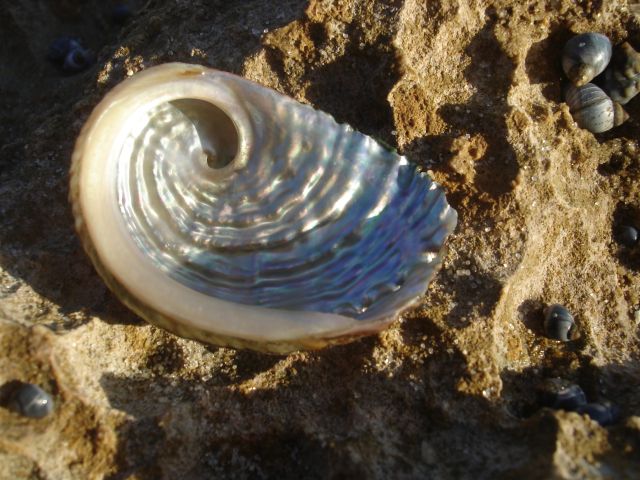
Common name
Roe’s abalone
Scientific name
Haliotis roei (Mollusca: Gastropoda: Prosobranchia: Haliotidae)
Description
Also called earshells because of their shape the abalone are a group of sea snails with a very flattened spire and a very large opening. There is a row of breathing holes along one side of the shell which is pearly inside. The outside is often encrusted with various attached creatures. Roe’s abalone is common on Perth’s rock platforms and a licence can be obtained from the Fisheries Department to collect them for food.
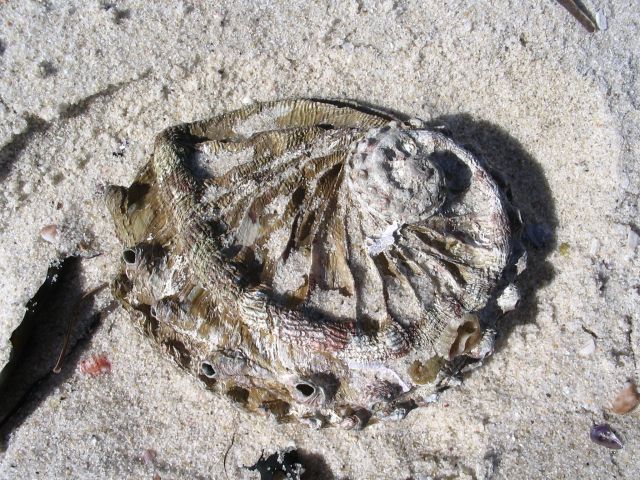
Common name
Abalone
Scientific name
Haliotis scalaris (Mollusca: Gastropoda: Prosobranchia: Haliotidae)
Description
The specific name means “with stairs”, because of the ridges on the shell. This species lives under rocks and is hard to find. However octopus can evidently find them because the shells are often found in octopus middens.
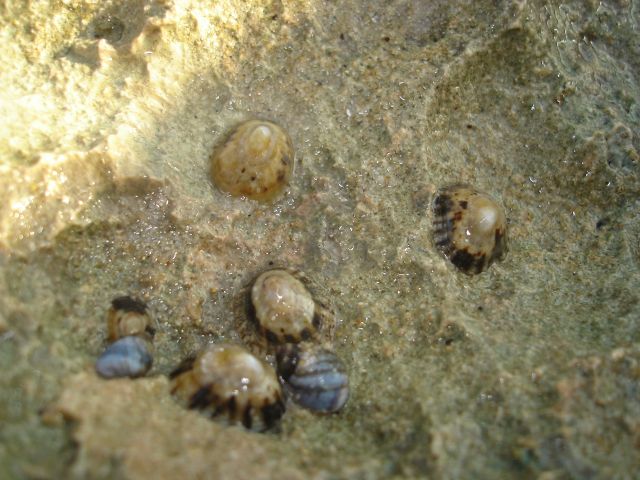
Common name
Limpets
Scientific name
(Mollusca: Gastropoda: Prosobranchia: Patellidae)
Description
Limpets have a low, conical shell and a very strong foot to help them cling onto rocks on wave-swept shores. If you find a limpet with a hole, notch or groove in the shell it probably belongs to a separate group called the keyhole limpets (Fissurellidae).
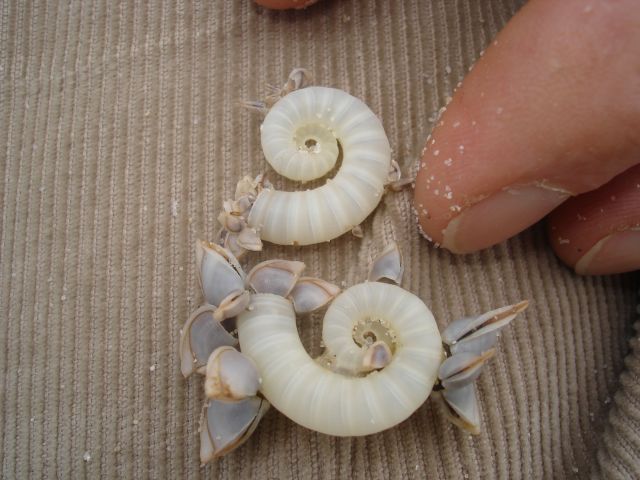
Common name
Ram’s horn shell
Scientific name
Spirula spirula (Mollusca: Cephalopoda)
Description
Looking closely at this little coiled shell you can see that it is partitioned into chambers like the nautilus shell or the long-extinct ammonites. It is a cephalopod, like the squid and the octopus, and has ten arms. Spirula lives at great depths in the ocean and live ones have rarely been seen. The shell in the photo has barnacles attached.
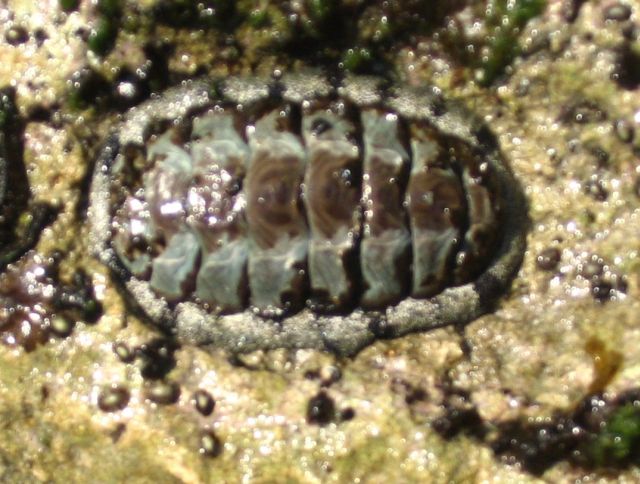
Common name
Chiton
Scientific name
(Mollusca: Polyplacophora)
Description
Chitons are molluscs that have eight overlapping plates on an oval body. They move slowly over the rocks, mainly at night, scraping up algae and other food with their rasp-like radula. Most species live in crevices hidden away from predators.
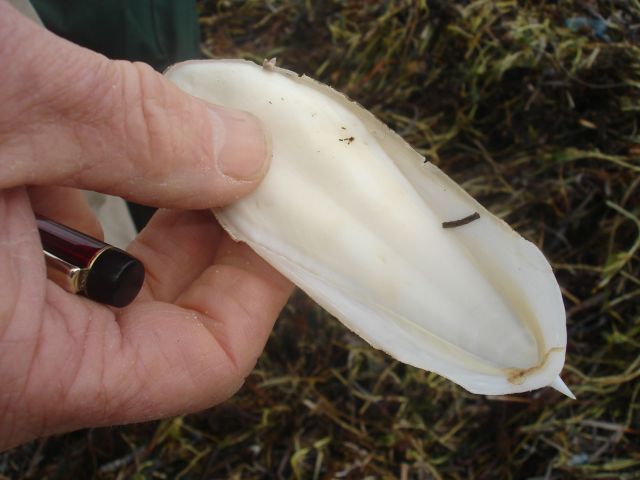
Common name
Cuttlefish bone
Scientific name
(Mollusca: Cephalopoda: Sepiidae)
Description
These natural surfboards are the buoyant internal shell of the cuttlefish which is in the same group of molluscs as the squid and the octopus. Cuttlefish have eight short arms and two long tentacle-arms. The different species have different shaped cuttlebones.
Cottesloe Coastcare Association
PO Box 32
Cottesloe WA 6911
info@cottesloecoastcare.org
Sign up to our Newsletters
To stay up to date with our news and upcoming events.
